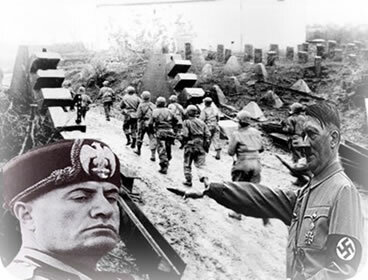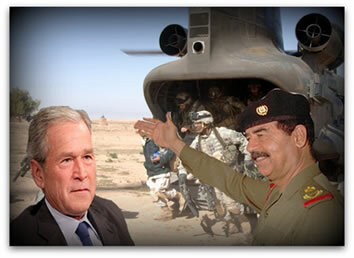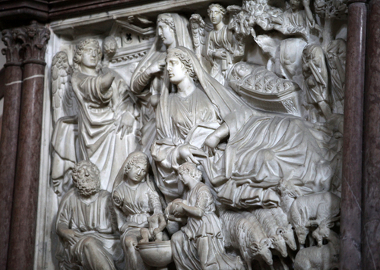In 1929, the North American capitalist economy experienced one of the greatest crisis of capitalism in history. This crisis became known as the New York Stock Exchange Crash. The consequences of the capitalist crisis were immediate, millions of workers were unemployed, thousands of entrepreneurs lost all their capital and declared the bankruptcy of their companies. Many US citizens committed suicide as a result of the stock market crash.
North American society was waiting for State intervention in the economy with a view to overcoming the crisis. Time passed and businessmen and the republican government were not able to overcome it. Unemployed workers and bankrupt entrepreneurs called for state reforms in the economy.
The president contemporary to the event (1929), Herbert Hoover, adopted a passive action, as he followed the rules of the classical liberalism, according to which the State should not interfere in economic matters and it would be up to the market to stipulate wages, prices and production limits.
The classic liberal position of the American state had to be set aside, and the state should limit market power and increase workers' income, which would increase the ability to consumption.
In the 1930s, the Democrat Franklin Delano Roosevelt assumed the presidency of the United States, who formed a team of advisers influenced by the theories of the English economist John Keynes. They highlighted the realization of public investments (State) to dynamize the economy in periods of crisis. Keynes' ideas surpassed classical liberalism. known as Keynesianism, these ideas advocated the State intervention in the economy (Marketplace).
Roosevelt and his advisory team implemented a plan, called the New Deal (New “Adjustment”), which had some goals to meet. One of the first goals was to overcome and end bank failures: for this, the North American Central Bank authorized unlimited financial loans to banks and loans were made to farmers to carry out the agriculture.
Another goal stipulated by the New Deal was the fight against unemployment. The government fixed the minimum wage, stipulated maximum working hours, provided subsidies to states to cover unemployment insurance, and abolished child labor. There was also an expansion in social security: the government started to offer workers insurance in cases of disability, old age and unemployment (the so-called welfare state).
In 1933, the US government started a project of large public works to end unemployment in the country. Roads, bridges, popular houses and hydroelectric power plants were built. All the measures implemented by the New Deal alleviated the social and economic problems caused by the crisis. 1929 capitalist left to the United States, but they did not definitively solve the problems economical.
In 1939, the Second World War. The military industry and the movement of soldiers to the front of the battle solved the unemployment problem; and the production of armaments and ammunition stirred up the world economy again. After the entire 20th century, and the 21st century began, the US economy went bankrupt and several companies in the real estate and banking sectors declared bankruptcy. Was the 1929 crisis hovering in the American air again?
Do not stop now... There's more after the advertising ;)

Mussolini and Hitler during World War II: Rise of the Economy through the War Industry.
In the 20th century, several conflicts took place, several governments fell apart and others began. At the beginning of the 21st century, another threat of war swept the world: the United States and Iraq. What brought these two nations into conflict? Many analysts say the United States needed to move its economy after successive crises. So, would the military industry be once again the economic redeemer?
After the terrorist attacks on the United States on September 11, 2001, the Americans invaded Afghanistan, looking for the leader of the attacks, the terrorist Osama bin Laden. Iraq was accused of collaborating with terrorism, and the Iraqi dictator Saddam Hussein it became the new target of the Americans.

Georg W. Bush and Saddam Hussein, respectively, US and Iraqi leaders during the 2003 war.
Iraq, accused by the United States of manufacturing weapons of mass destruction (nuclear, chemical and biological), had its territory invaded by coalition forces in 2003 (USA, France, England), even after a UN commission (United Nations) having gone to Iraq and not having found any kind of weapon of mass destruction (according to the report of the commission).
The government of Iraqi dictator Saddam Hussein came to an end after the defeat of his troops. In 2006, Saddam was tried by a court and sentenced to death. The American military motivation to attack Iraq in 2003, according to some specialists, happened to move the North American economic crisis (war industry) and for the effective control of the United States of the productions of Petroleum in Iraq.
By Leandro Carvalho
Master in History
Would you like to reference this text in a school or academic work? Look:
OAK, Leandro. "Iraq and the United States: A New New Deal? "; Brazil School. Available in: https://brasilescola.uol.com.br/historiag/iraque-estados-unidos.htm. Accessed on June 28, 2021.

